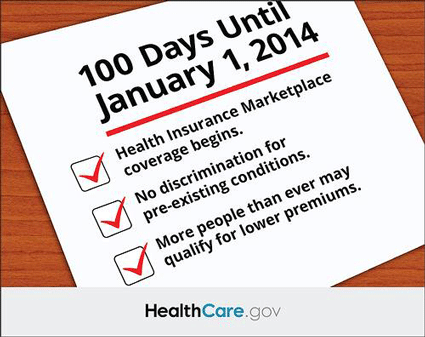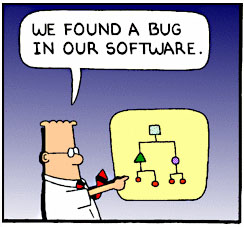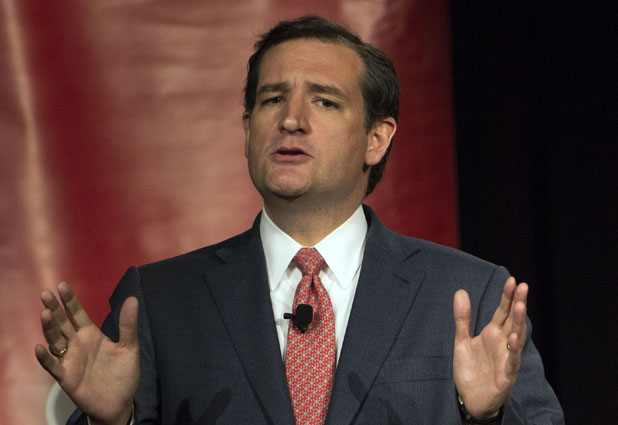
Healthcare.gov
Republicans have been insisting for a week now that Obamacare is a failure because immediately following its official debut on October 1, few people actually signed up for subsidized insurance plans through its new health exchanges. “Error message after error message. Failed security standards and 60 hours on website hold for just this one Kansan. It is clear, Obamacare is failing — an embarrassment, particularly for the former Kansas governor who is now in charge of Obamacare,” Rep. Tim Huelskamp (R-Kan.) complained on the House floor last week.
But it doesn’t really matter whether many people enrolled in Obamacare last week. Healthcare.gov saw 8 million unique visitors in the first four days the exchanges were open. It isn’t especially surprising that not all those people managed to get covered on Day 1. The coverage people are seeking isn’t even available until January 1. Uninsured Americans have until December 15 to sign up for coverage that starts the first of the year, and another three months to sign up during the open enrollment period that ends March 31. (People can still sign up after March 31 if they have a change in status, such as losing employer-based coverage.) If people weren’t able to sign up October 1 or even October 5, that’s not the end of the world. It’s just the beginning.
Experience shows that getting lots of uninsured people into private health plans and new Medicaid plans is maddeningly difficult and time-consuming. Massachusetts has already done this, after all. In 2006, Gov. Mitt Romney signed into law a health care reform bill that is essentially the model for the Affordable Care Act. Like the ACA, Romneycare expanded the state’s Medicaid program and then opened the Massachusetts Health Connector, the prototype of Healthcare.gov, to provide a marketplace where state residents could purchase subsidized individual health insurance plans.
What happened in Massachusetts is pretty much exactly what’s happening right now with Obamacare. After the law went into effect in Massachusetts, state offices were totally overwhelmed by the number of people clamoring to sign up for insurance, or what the state’s Medicaid director dubbed the “stress of success.” Lost paperwork, computer glitches, confusion over who was eligible for what, and not enough staff to handle the workload meant that in those early days, consumers could wait several months after submitting an application to finally get coverage. So many people were trying to enroll in the expanded Medicaid program that the Medicaid agency ended up with a months-long backlog of applications. In the first two months, only 18,000 of more than 200,000 potentially eligible people had successfully signed up through the connector, according to Jonathan Gruber, an MIT professor who helped design the Massachusetts system and served on the Connector board. And all of that happened in a state with only 300,000 or so eligible applicants and without a well-funded opposition trying to derail the law at every turn.
But guess what? Eventually the kinks got worked out and people got covered. Enrollment opened in October 2006, and by the deadline for getting mandatory coverage, July 1, 2007, the Boston Globe reported, 20,000 more people had signed up for insurance on the exchange than the state had expected—12,000 of them in just the two weeks before the deadline. Total enrollment went from 18,000 in December 2006 to 158,000 a year later, says Gruber. Today, Massachusetts has the lowest rate of uninsured residents in the entire country—less than 4 percent—and polls show that people are generally happy with how everything worked out. The conservative Massachusetts Taxpayers Foundation has called the state’s health care reform law “a well thought-out piece of legislation.”
The federal exchange is fielding vastly more work than the Massachusetts Health Connector, and if it’s having trouble with the workload, that’s largely thanks to Republican opponents. The drafters of the ACA never envisioned the federal government running health care marketplaces for most of the country. The ACA was specifically designed to respect the state’s rights that Republicans claim to care so much about. It empowered states, which already regulate the sale of insurance, to run the exchanges. Healthcare.gov was supposed to be a backstop for states either too small to run their own or that dropped the ball on setting up their own exchanges. Instead, Republican governors across the country, and mostly in the South, abdicated the job completely. So instead of running a marketplace for a couple of states as planned, Healthcare.gov is having to do the work of 70 percent of them, including big states like Florida, Texas and Virginia (and also, ahem, Kansas). Of course the site was going to have some problems!
The first real measure of how well the system works is still a few months away. Given the human propensity to procrastinate, the surge of actual enrollments will probably come, as it did in Massachusetts, in the week or two before the first coverage deadline on December 15. That’s when people will realize that coverage starts within days—not months or years—and start making decisions in earnest. Bronze plan or silver? Blue Cross or Aetna?
If only a handful of people have successfully enrolled by then, it won’t be just conservatives who are freaking out.
















